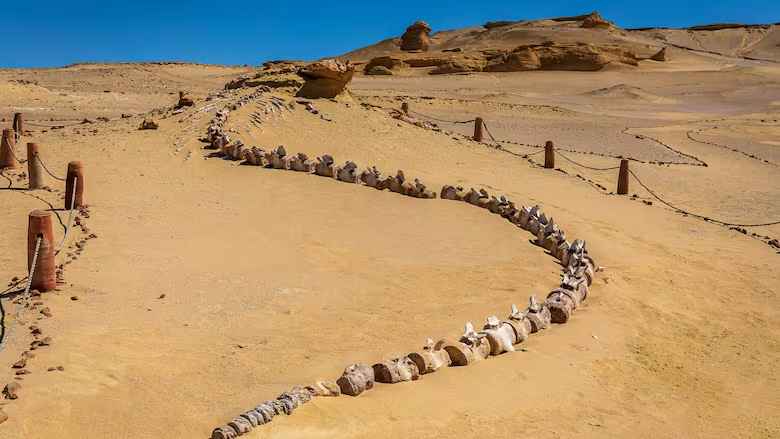
A Journey Through Time: The Fossil Secrets of Whale Valley
Nestled deep within the vast expanse of Egypt's Sahara Desert lies a remarkable natural wonder known as Wadi Al-Hitan, or Whale Valley. This unique location has become a treasure trove for paleontologists and scientists, offering invaluable insights into the evolutionary journey of whales. The site is home to over 400 fossilized whale skeletons, providing compelling evidence that these majestic creatures once had feet and toes.
The fossils found in Whale Valley date back to the late Eocene epoch, a period spanning from 55 to 34 million years ago. During this time, the region was submerged beneath the Tethys Ocean, creating an environment ideal for the development of marine life. These ancient remains tell a fascinating story of evolution—the transformation of whales from land-dwelling animals to the oceanic giants we know today.
One of the most significant discoveries at Whale Valley took place in 1902 when paleontologists unearthed the remains of Basilosaurus isis, a massive predator whale that could reach lengths of up to 60 feet. This creature was not only one of the largest predators of its time but also played a crucial role in the ecosystem of the Tethys Ocean. A 2019 study revealed that B. isis used its sharp teeth and long snout to crush the skulls of smaller whales before consuming them, showcasing its formidable hunting capabilities.
In 1989, a groundbreaking discovery was made—fossils of B. isis with preserved feet, toes, and hind limbs. This rare find provided concrete evidence that whales once walked on land. Although modern whales do not have external legs, they still possess pelvic bones, which serve as a genetic link to their terrestrial ancestors. This discovery has been instrumental in understanding the evolutionary transition of whales from land to sea.
Due to its rich fossil record, UNESCO designated Whale Valley as a World Heritage Site in 2005. Since then, researchers have continued to uncover more marine fossils, including ancient sharks, turtles, sea cows, rays, and crocodiles. The dry desert climate has helped preserve these remains for millions of years, offering a glimpse into the diverse marine life that once thrived in the region.
Today, Wadi Al-Hitan functions as an open-air museum, attracting scientists and visitors from around the world. The site continues to be a focal point for ongoing research, with strict protections in place to ensure the preservation of its invaluable fossil record. As researchers delve deeper into the mysteries of this ancient landscape, Whale Valley remains a vital window into Earth's evolutionary history, revealing the incredible journey of whales from land to sea.
Post a Comment